
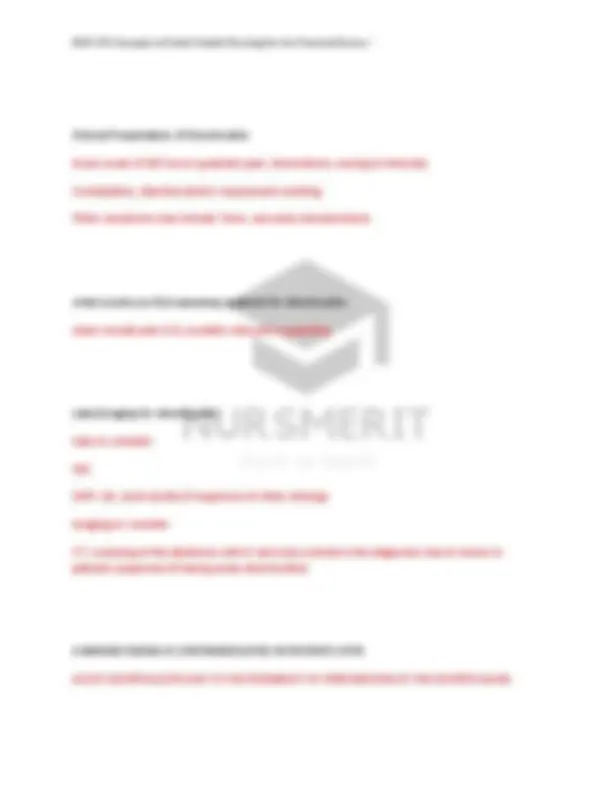
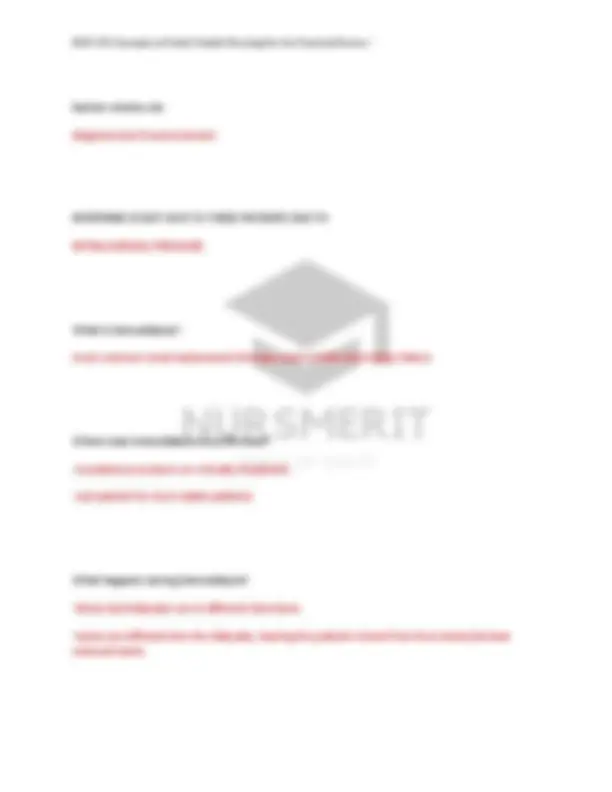
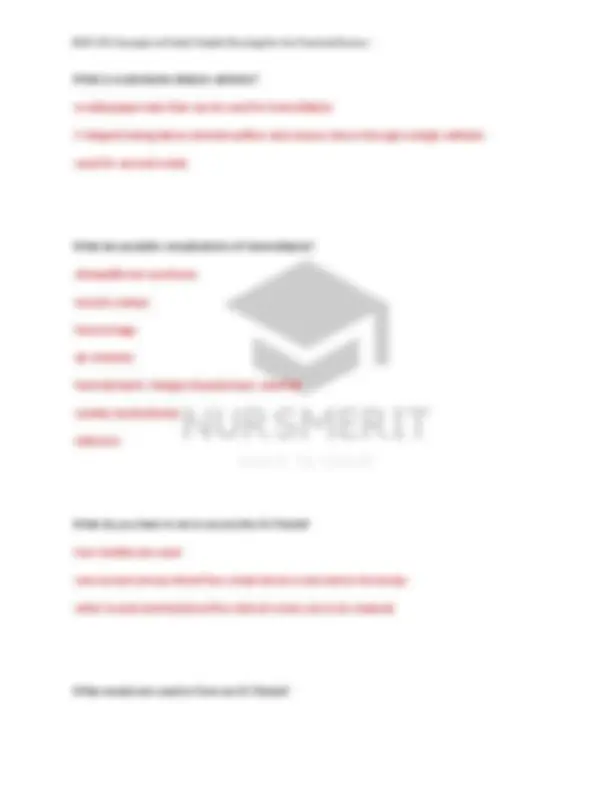
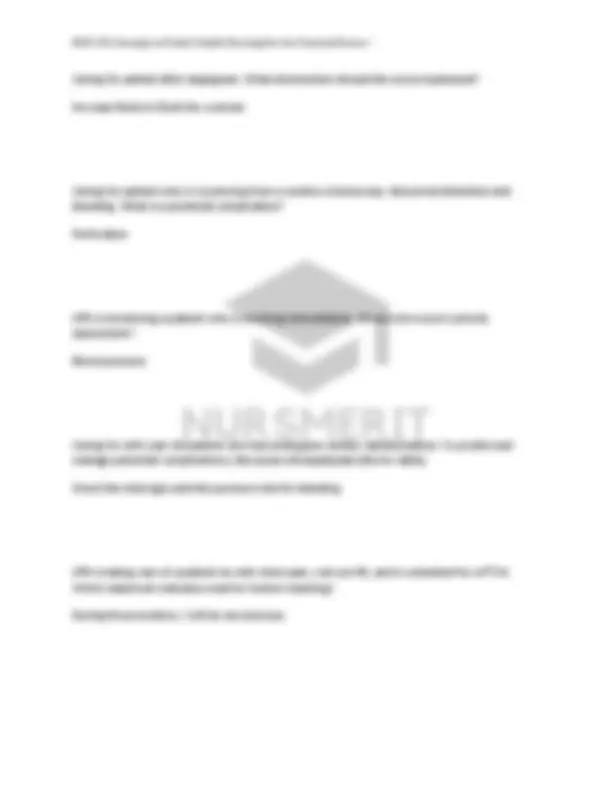
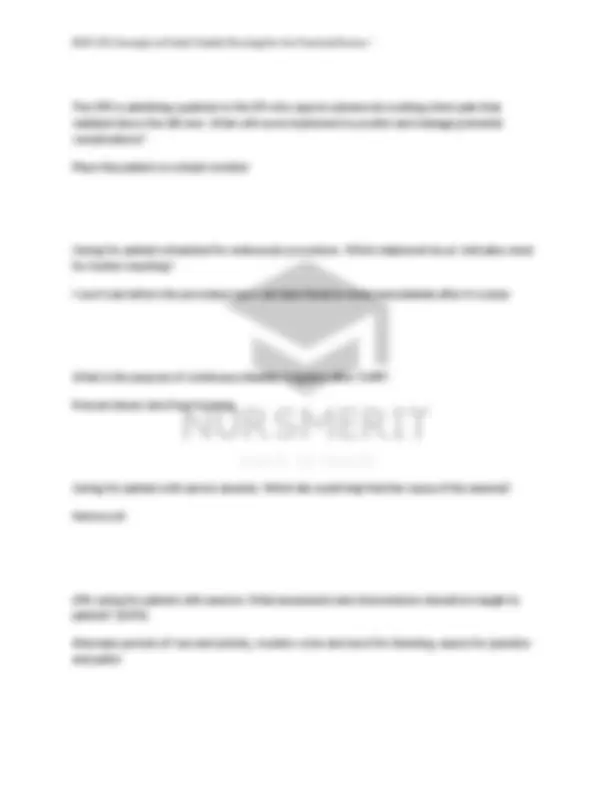
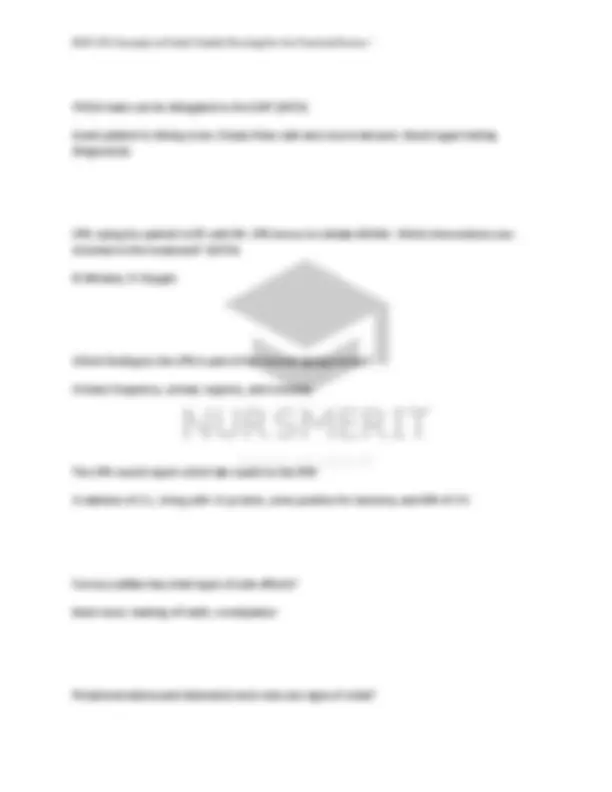

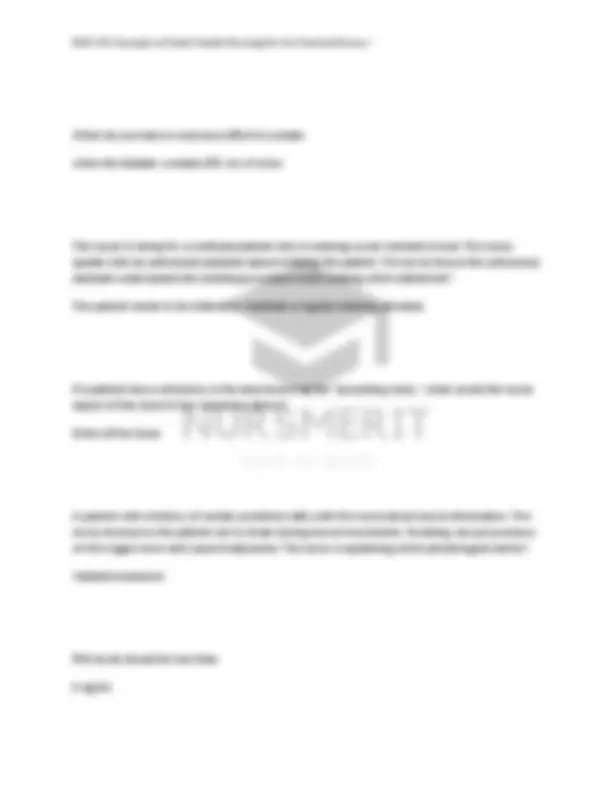
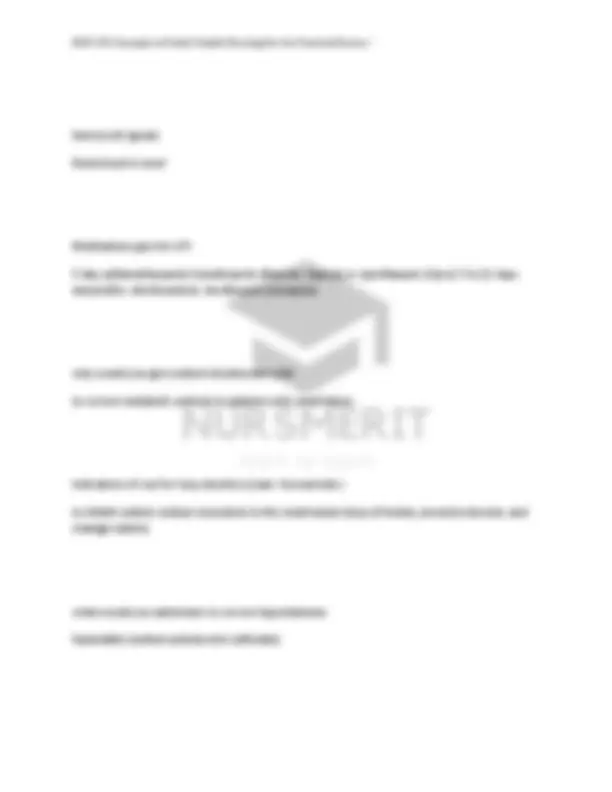
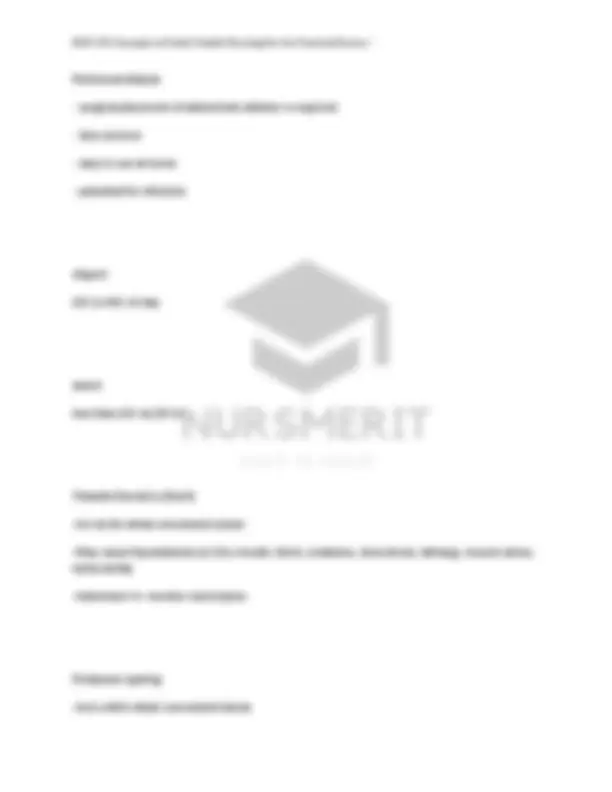
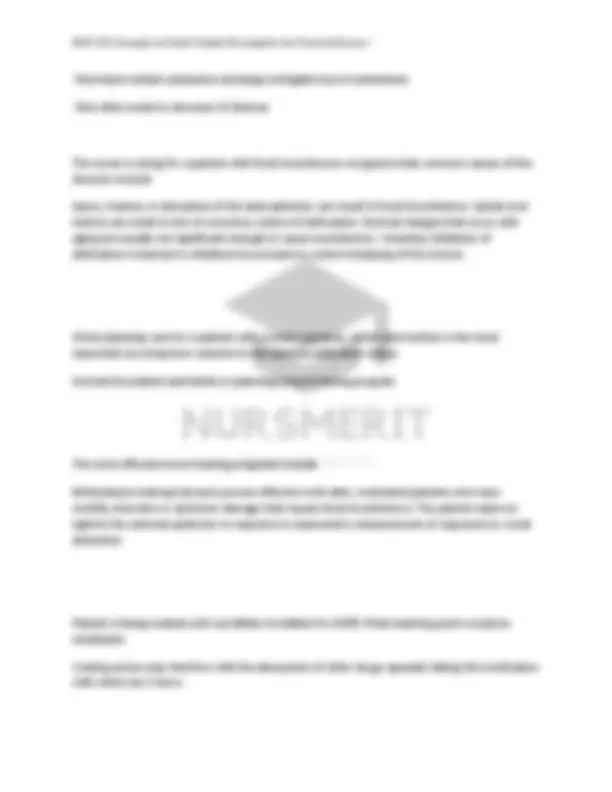
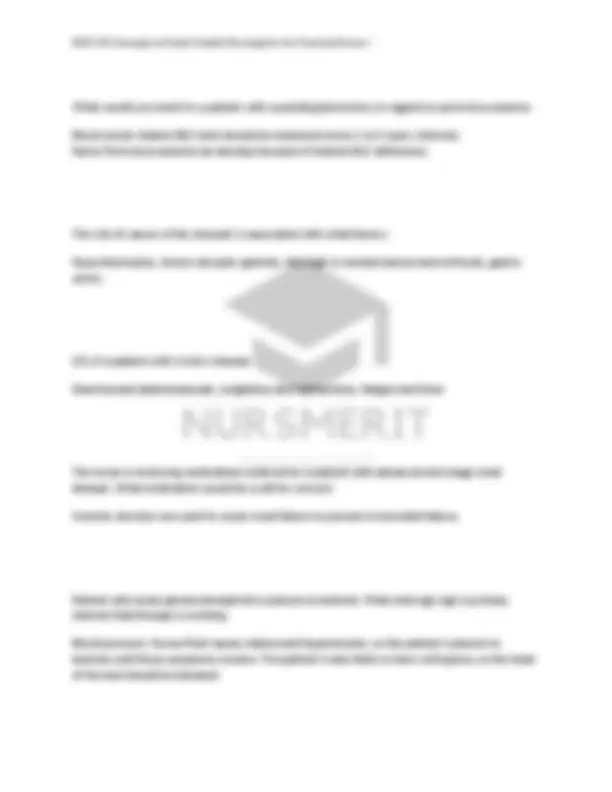
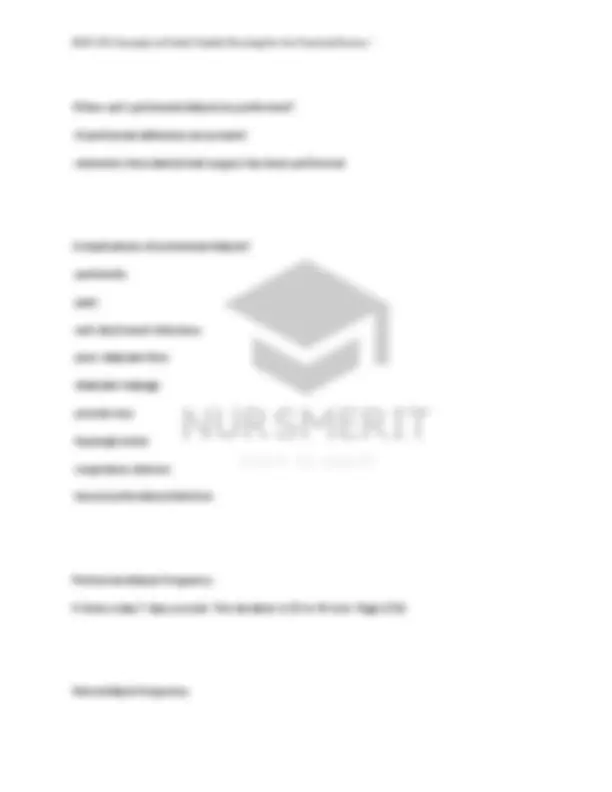
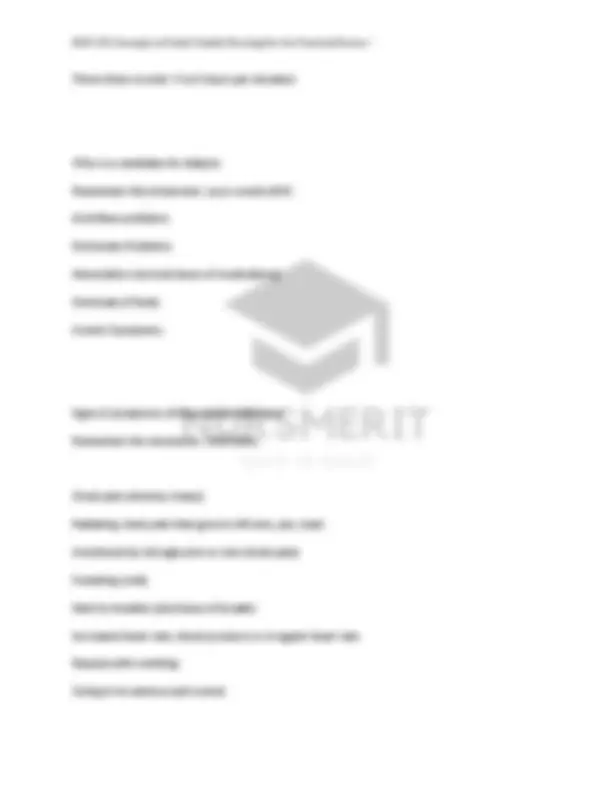
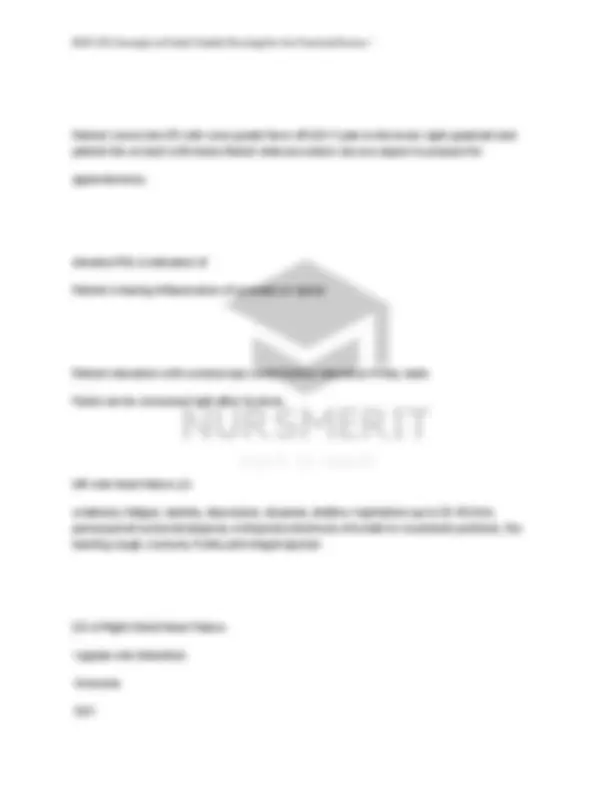
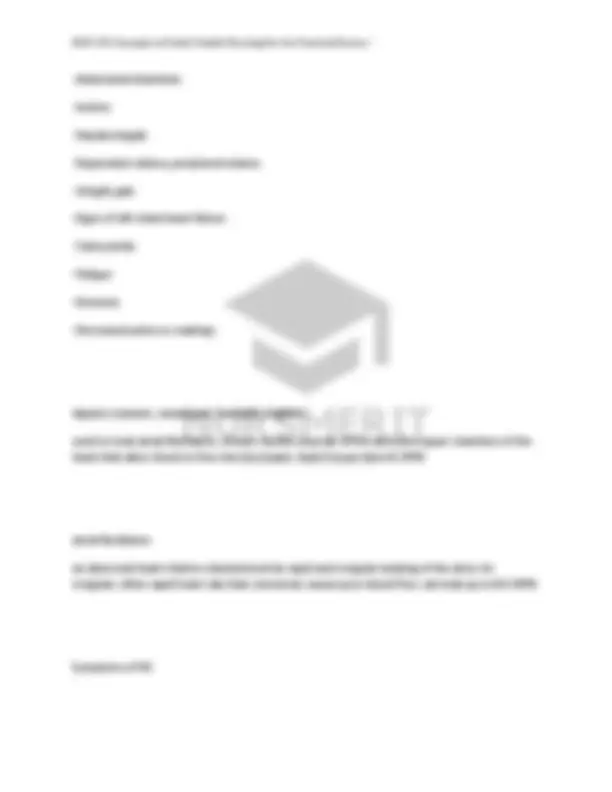
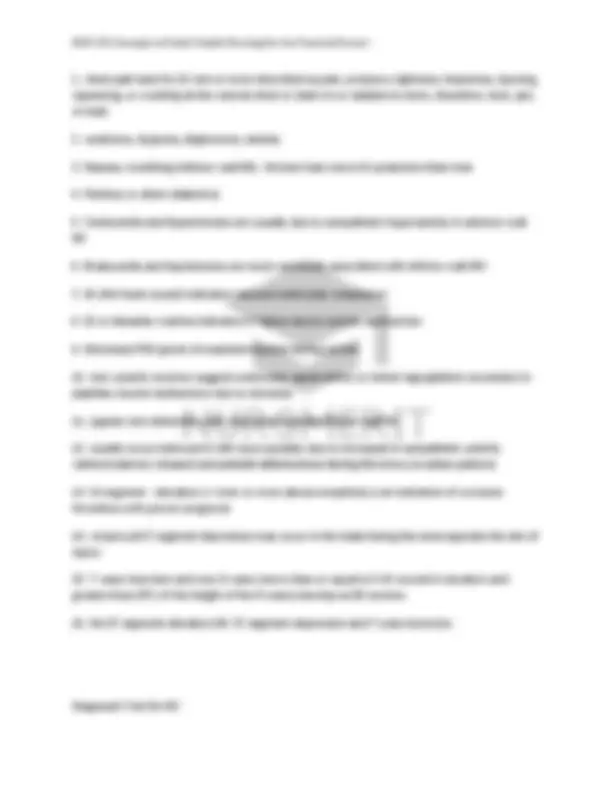
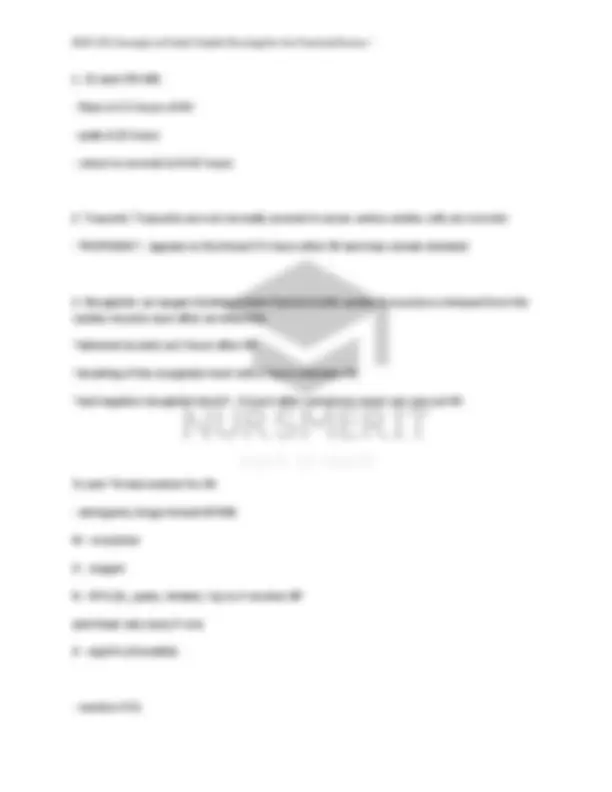
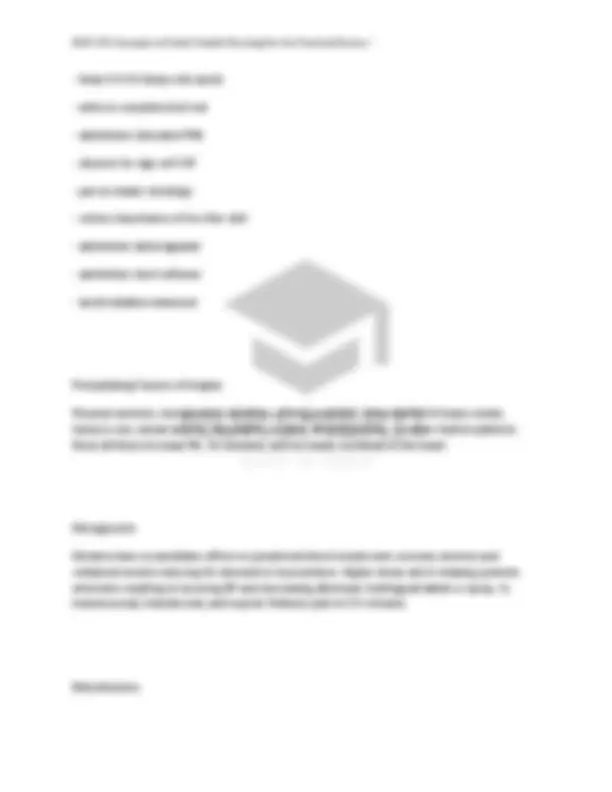
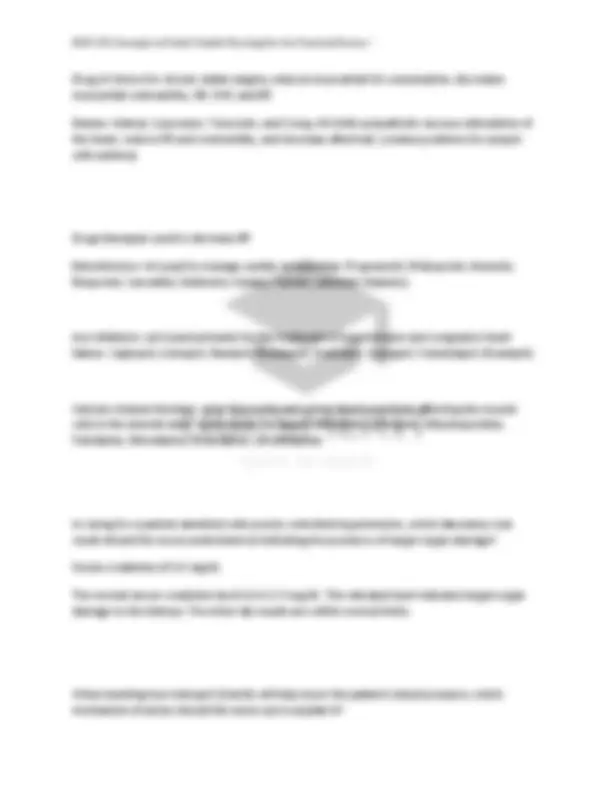
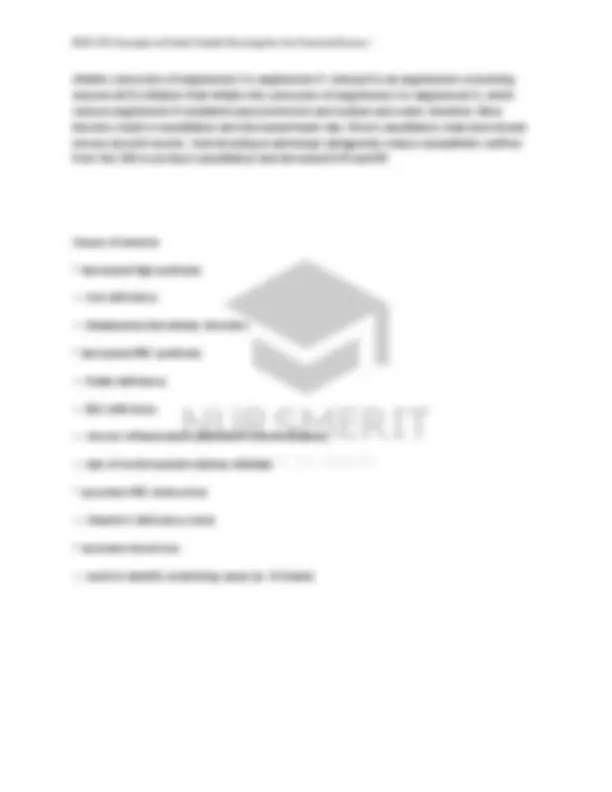


Study with the several resources on Docsity

Earn points by helping other students or get them with a premium plan


Prepare for your exams
Study with the several resources on Docsity

Earn points to download
Earn points by helping other students or get them with a premium plan
Community
Ask the community for help and clear up your study doubts
Discover the best universities in your country according to Docsity users
Free resources
Download our free guides on studying techniques, anxiety management strategies, and thesis advice from Docsity tutors
HONDROS NUR 176 ADULT HEALTH NURSING TEST 2/EXAM 2 2025 ACCURATE SUMMER –FALL GRADED A (100 QUESTIONS)
Typology: Exams
1 / 29

This page cannot be seen from the preview
Don't miss anything!






















LPN is working nights on a med-surg uni. Patient complains of chest pain. Which statement indicates need for immediate interventions? It feels like a heavy pressure in the center of my chest. LPN working nights. At 0500 the patient awakens. Complains of HA and states he had a nosebleed. What is the LPN's next action? Take pt vitals LPN caring for patient with heart failure complaining of severe dyspnea and coughing pink sputum. Which intervention is used to prevent further complications? Pull the patient up in the bed and administer O2. Patient is admitted with possible heart failure. LPN calls the physician for admitting orders. Which order does the LPN expect to receive? BNP and CXR LPN caring for patient with hx of CHF, experiencing dyspnea. What is the nurse's next action?
Assess respiratory status and vitals LPN completing dc instructions for patient with A-Fib. What instruction will she include for this patient who will be taking Coumadin at home? You will want to cut down on salads with this medication Patient newly dx with heart failure prescribed digoxin. Which statement by the LPN indicates understanding of how to administer the medication? If the heart rate is below 60, hold the dose and inform the Dr. Patient at ER for dyspnea, BP 200/130, blurred vision, and severe HA. Has hypertension and high cholesterol. LPN suspects which condition? Malignant Hypertension Newly dx patient with Hypertension asks the LPN what they need to do to improve their bp readings. What is the nurse's response? Do aerobic exercises 3-4X a week. Symptomatic diverticular disease includes hemorrhage, inflammation (diverticulitis), or complications of diverticulitis such as abscess, fistula, obstruction, or free perforation.
barium enema can diagnosis but if acute beware MORPHINE IS NOT GIVE TO THESE PATIENTS DUE TO INTRALUMENAL PRESSURE. What is hemodialysis? most common renal replacement therapy used in ESKD and kidney failure Where may hemodialysis be preformed?
What is a subclavian dialysis catheter?
Caring for patient after angiogram. What intervention should the nurse implement? Increase fluids to flush the contrast Caring for patient who is recovering from a routine colonoscopy. Abnormal distention and bleeding. What is a potential complication? Perforation LPN is monitoring a patient who is receiving hemodialysis. What is the nurse's priority assessment? Blood pressure Caring for a 64 year old patient who has undergone cardiac catheterization. To predict and manage potential complications, the nurse will implement this for safety. Check the vital signs and the puncture site for bleeding LPN is taking care of a patient dx with chest pain, rule out MI, and is scheduled for a PTCA. Which statement indicates need for further teaching? During the procedure, I will be unconscious.
Which tasks can be delegated to the UAP (SATA) Assist patient to dining room, Empty foley cath and record amount, blood sugar testing (fingerstick) LPN caring for patient in ER with MI. LPN knows to initiate MONA. Which interventions are included in this treatment? (SATA) N-Nitrates, O-Oxygen Which finding by the LPN is part of the normal aging process? Urinary frequency, urinary urgency, and nocturia. The LPN would report which lab results to the RN? Creatinine of 2.1, Uring with +2 protein, urine positive for bacteria, and INR of 3. Ferrous sulfate has what types of side effects? black stool, staining of teeth, constipation Peripheral edema and distended neck veins are signs of what?
RIGHT sided heart failure Mild to severe pain in LLQ, fever, and elevated WBC is indicative of what? Diverticulitis Inflammation of the structures of the kidney and is almost always caused by E-Coli? Pyelonephritis In this phase of acute renal failure, urinary output is less than 400 ml in 24 hours. BUN and serum creatinine levels raise Oliguric Phase In this phase of acute renal failure, urinary output can be 1-2L in 24 hours. Diuretic Phase What are the common signs of end-stage renal disease? Lethargy, anorexia, pruritus, anuria muscle cramps, dusky yellow/tan or gray skin color, and anemia
Kussmaul sign is a paradoxical rise in jugular venous pressure (JVP) on inspiration, or a failure in the appropriate fall of the JVP with inspiration. It can be seen in some forms of heart disease and is usually indicative of limited right ventricular filling due to right heart dysfunction. What blood test is done to evaluate for impaired renal function, which is affected very little by dehydration, malnutrition, or hepatic function? Serum creatinine The nurse is caring for a patient who is taking digoxin once a day for treatment of congestive heart failure. He now has a new order to begin taking spironolactone (Aldactone). Which nursing intervention is most appropriate for this patient? Monitor the patient for signs and symptoms of digoxin toxicity. The LPN/LVN is reading over the nursing care plan for a newly admitted female patient. One nursing diagnosis written is "impaired urinary elimination." The LPN/LVN is not certain exactly what that means, but upon further reading of the care plan, discovers nursing interventions listed as including "remind patient to perform Kegel exercises four times per shift" and "assist patient to toilet every 2 hours." Considering the care plan information, what is the patient most likely experiencing? Urinary incontinence The nurse is caring for a patient with acute renal failure (oliguric phase). What would the nurse expect to assess on a patient with this diagnosis? Anorexia, nausea, vomiting, and decreased urine output
When do you have a conscious effort to urinate when the bladder contains 250 mL of urine The nurse is caring for a confused patient who is wearing a vest restraint in bed. The nurse speaks with an unlicensed assistant about toileting the patient. The nurse knows the unlicensed assistant understands the toileting procedure when making which statement? The patient needs to be toileted to maintain a regular toileting schedule. If a patient has a colostomy in the area known as the "ascending colon," what would the nurse expect of the stool in the colostomy device? Stole will be loose A patient with a history of cardiac problems talks with the nurse about bowel elimination. The nurse stresses to the patient not to strain during bowel movements. Straining can put pressure on the vagas nerve and cause bradycardia. The nurse is explaining which physiological action? Valsalva maneuver PSA levels should be less than 4 ng/mL
how can incontinence impact the patient risk for skin breakdown, changes in ADLs, and social relationships. Types of Urinary Incontinence Stress (small amounts during physical movements) ,urge (leaking during unexpected times including sleep) overactive, overflow, functional, reflex, mixed, transient (temporarily due to a situation that will pass) cystitis inflammation of the urinary bladder Lasix (furosemide) Diuretic (loop) Lowers glucose level, electrolyte depletion (check K+ and Na) FVD can occur monitor edema check daily weights. coumadin (warfin) anticoagulant interferes with clotting synthesis of vit K. Hemorrhage monitor check blood in stool avoid otc meds. Use electric razor. Watch for cuts use soft tooth brush daily PTT and INR labs
Metoprolol (lopressor) Beta blocker. HTN CHF and MI blocks beta 2 watch for respiratory depression and not given to asthmatics. Lowers BP. monitor glucose I/O and heart rate. Don't administrator if HR is below 60 Kayexalate (sodium polystrene sulfonate) treatment for HyperKalemia gonna be pooping a lot! monitor electrolytes and interactions with warfin K-exit incomplete emptying of the bladder may result in possibility of UTI hemodialysis
What would you teach to a patient with a partial gastrectomy in regards to pernicious anemia Blood serum vitamin B12 level should be measured every 1 to 2 years. (Intrinsic factor.Pernicious anemia can develop because of vitamin B12 deficiency) The risk of cancer of the stomach is associated with what factors Hypochlorhydria, chronic atrophic gastritis, diet high in smoked and preserved foods, gastric ulcers. S/S of a patient with Crohn's disease Diarrhea and abdominal pain, weightloss and malnutrition, fatigue and fever The nurse is reviewing medications ordered for a patient with advanced end-stage renal disease. What medication would be a call for concern Osmotic diuretics are used for acute renal failure to prevent irreversible failure, Patient with acute glomerulonephritis is placed on bedrest. What vital sign sign is primary interest that therapy is working Blood pressure. Excess fluid causes edema and hypertension, so the patient is placed on bedrest until those symptoms resolve. The patient is also likely to have orthopnea, so the head of the bed should be elevated.